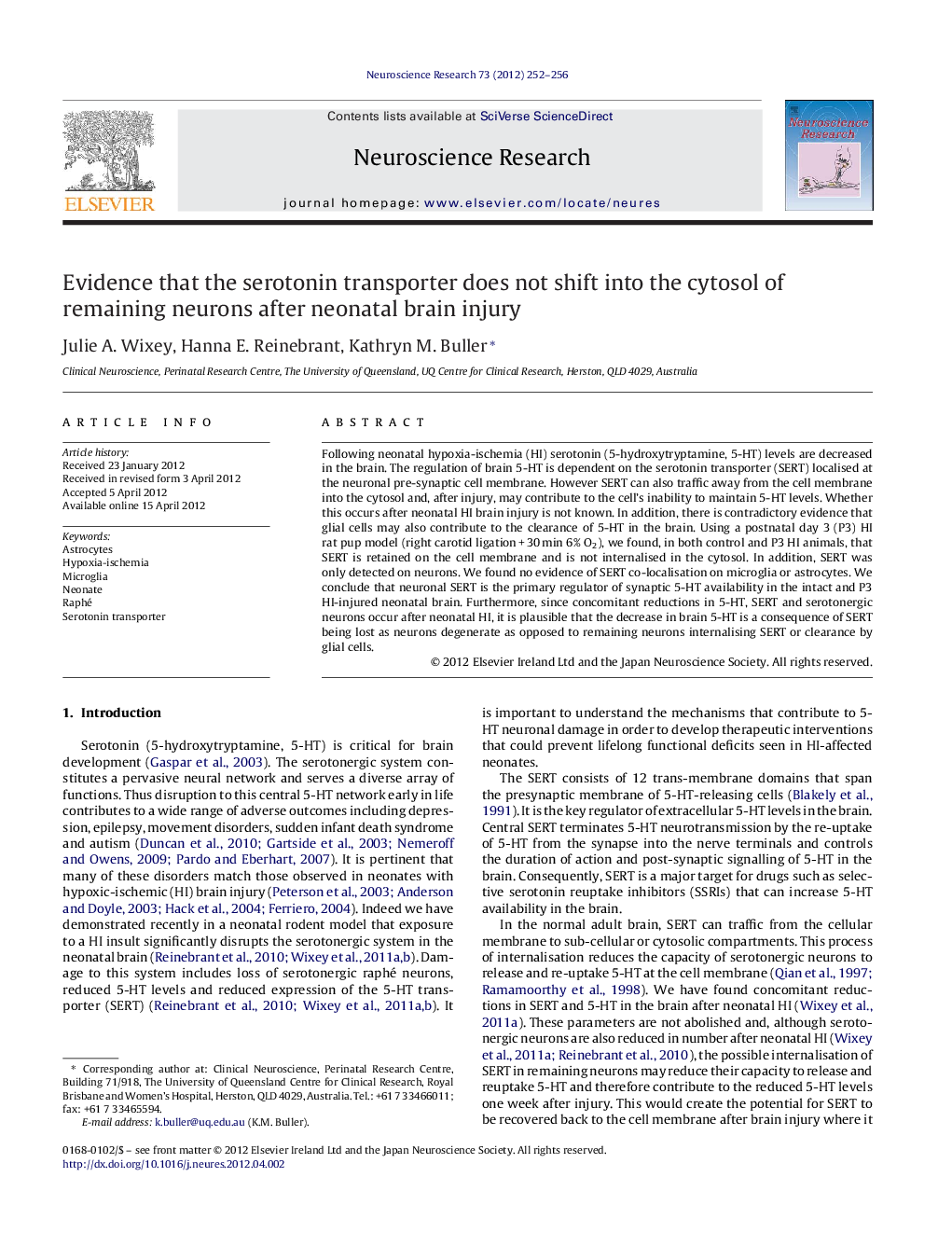| Article ID | Journal | Published Year | Pages | File Type |
|---|---|---|---|---|
| 4351497 | Neuroscience Research | 2012 | 5 Pages |
Following neonatal hypoxia-ischemia (HI) serotonin (5-hydroxytryptamine, 5-HT) levels are decreased in the brain. The regulation of brain 5-HT is dependent on the serotonin transporter (SERT) localised at the neuronal pre-synaptic cell membrane. However SERT can also traffic away from the cell membrane into the cytosol and, after injury, may contribute to the cell's inability to maintain 5-HT levels. Whether this occurs after neonatal HI brain injury is not known. In addition, there is contradictory evidence that glial cells may also contribute to the clearance of 5-HT in the brain. Using a postnatal day 3 (P3) HI rat pup model (right carotid ligation + 30 min 6% O2), we found, in both control and P3 HI animals, that SERT is retained on the cell membrane and is not internalised in the cytosol. In addition, SERT was only detected on neurons. We found no evidence of SERT co-localisation on microglia or astrocytes. We conclude that neuronal SERT is the primary regulator of synaptic 5-HT availability in the intact and P3 HI-injured neonatal brain. Furthermore, since concomitant reductions in 5-HT, SERT and serotonergic neurons occur after neonatal HI, it is plausible that the decrease in brain 5-HT is a consequence of SERT being lost as neurons degenerate as opposed to remaining neurons internalising SERT or clearance by glial cells.
► Novel insights into regulation of serotonin after neonatal brain injury. ► Serotonin transporter stays at cell membrane after neonatal brain injury. ► Microglia do not possess serotonin transporter in the intact and injured neonatal brain. ► Astrocytes do not possess serotonin transporter in the intact and injured neonatal brain.
